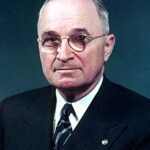President Harry Truman’s Executive Order 9835 established the most extensive federal employee screening program in American history. The Truman loyalty program created loyalty review boards across all government agencies. These boards investigated federal workers for alleged Communist sympathies or associations.
The Decision Behind Federal Employee Investigations
Truman signed Executive Order 9835 on March 21, 1947, amid growing Cold War tensions. The order required loyalty investigations of all federal employees and job applicants. ⚠️ The program targeted anyone with suspected Communist ties or “disloyalty” to the United States. Loyalty boards gained sweeping powers to dismiss employees based on associations, beliefs, or rumors.
Implementation of the Loyalty Review System
The Attorney General’s List of Subversive Organizations became the program’s foundation. Federal agencies established loyalty review boards with broad investigative authority. 📊 Over 3 million federal employees underwent loyalty screenings within five years. The FBI conducted extensive background checks, examining personal associations and political beliefs.
Controversial Methods and Procedures
Loyalty boards operated with minimal due process protections for accused employees. Anonymous accusations became grounds for investigation and dismissal. 💰 The program cost millions in administrative expenses and lost productivity. Employees faced career destruction based on guilt by association rather than concrete evidence.
Impact:
The Truman loyalty program fundamentally transformed American government employment and civil liberties. This controversial initiative created lasting consequences that extended far beyond federal agencies.
Immediate Consequences for Federal Workers
🔥 Over 1,200 federal employees lost their jobs through the loyalty program. Thousands more resigned under investigation pressure or fear of association. The program created a climate of suspicion within government agencies. Federal workers avoided certain political associations, books, or social gatherings that might trigger investigations.
Expansion of McCarthyism and Red Scare
The loyalty program legitimized anti-Communist hysteria throughout American society. 📉 State governments, private companies, and universities adopted similar screening procedures. McCarthyism found institutional support through Truman’s precedent. The program normalized guilt by association as an acceptable standard for employment decisions.
Constitutional and Legal Ramifications
Civil liberties organizations challenged the program’s constitutionality in multiple court cases. The Supreme Court later ruled several loyalty program provisions unconstitutional. 🌍 International observers criticized America’s retreat from democratic principles during the Cold War. The program damaged America’s moral authority in promoting freedom and democracy globally.
Long-term Effects on Government Service
The loyalty program established extensive security clearance procedures still used today. Government employment became associated with political conformity rather than merit. The program discouraged intellectual diversity and independent thinking in federal service. Many qualified professionals avoided government careers due to invasive screening procedures.
